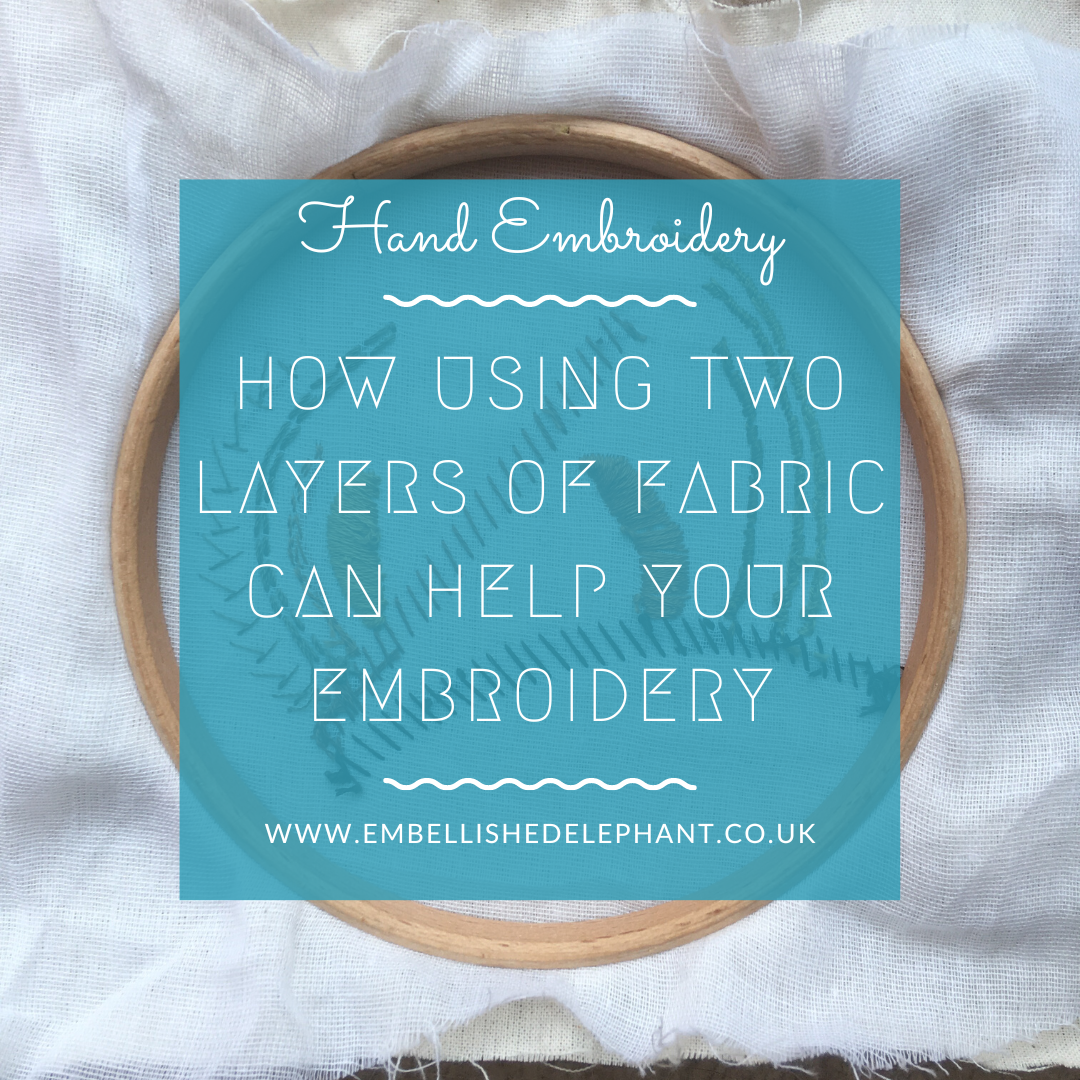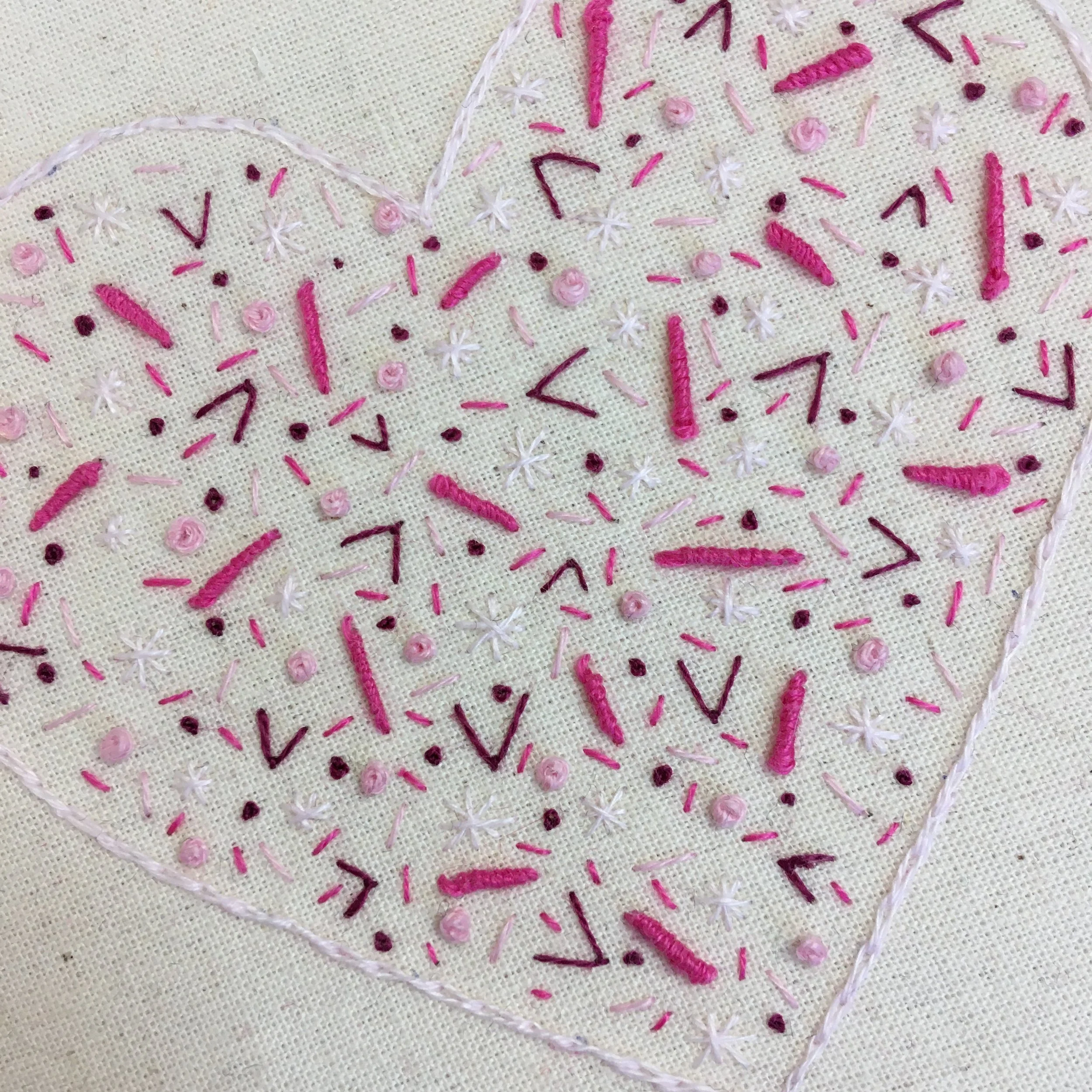My go to fabric for embroidery is a nice bit of calico. It has a nice thread count and weight to it meaning it doesn’t pucker very much when stitching.
When I change things up and use a different type of fabric especially thinner cotton or satin fabric I’ll add in another layer (normally after I’ve stitched a few stitches and discovered that they aren’t behaving quite the way I was expecting).
But when might using two layers of fabric be useful.
Fabric not being held tight by the hoop
Sometimes you’ll have a hoop where you’ve tightened the screw as far as it will go but your fabric is still not staying taut.
This may be that the fabric is thin or slippery, or it could be that the inner and outer hoops are slightly misaligned and not as close fitting as in other hoops (such as the one pictured)
If you don’t have another hoop you can use instead, then adding another layer of fabric means that there is just a little bit more for the hoop to grip onto.
Using thicker threads and/or embellishments
Although it may not seem like it when you are stitching, each stitch adds some weight to the fabric. The more stitches there are, the more weight and the more likely the fabric is to pucker.
Beads and sequins also add weight to the fabric and can lead to puckering or sagging fabric.
Adding an under-layer of fabric helps to carry some of that weight. If you are using particularly heavy threads or embellishments then you may want to use a thicker under-layer or even add a third layer of fabric or use interfacing.
This piece had several different cords couched on the front meaning a bit of extra support was needed at the back.
Using lots of isolated stitches
There are some designs such as this kit where there are lots of stitches isolated from one another. When stitching a piece like this you could start and tie of a thread after stitching each individual but that ends up being a hassle. The easier thing is to stitch each colour in one go but you end up with thread trails between each stitch which can show on the front of the fabric.
Adding a second layer of fabric helps to hide these thread trails and make it less likely that they can be seen from the front of the fabric.
And if you do use a second layer of fabric what can you use? I tend to use a bit of muslin or a thinner weight calico but you could use any woven fabric.
Enjoyed this blog post? I share embroidery tips and a free embroidery pattern in my monthly newsletter. Sign up here to receive the newsletter on the 1st of each the month.




